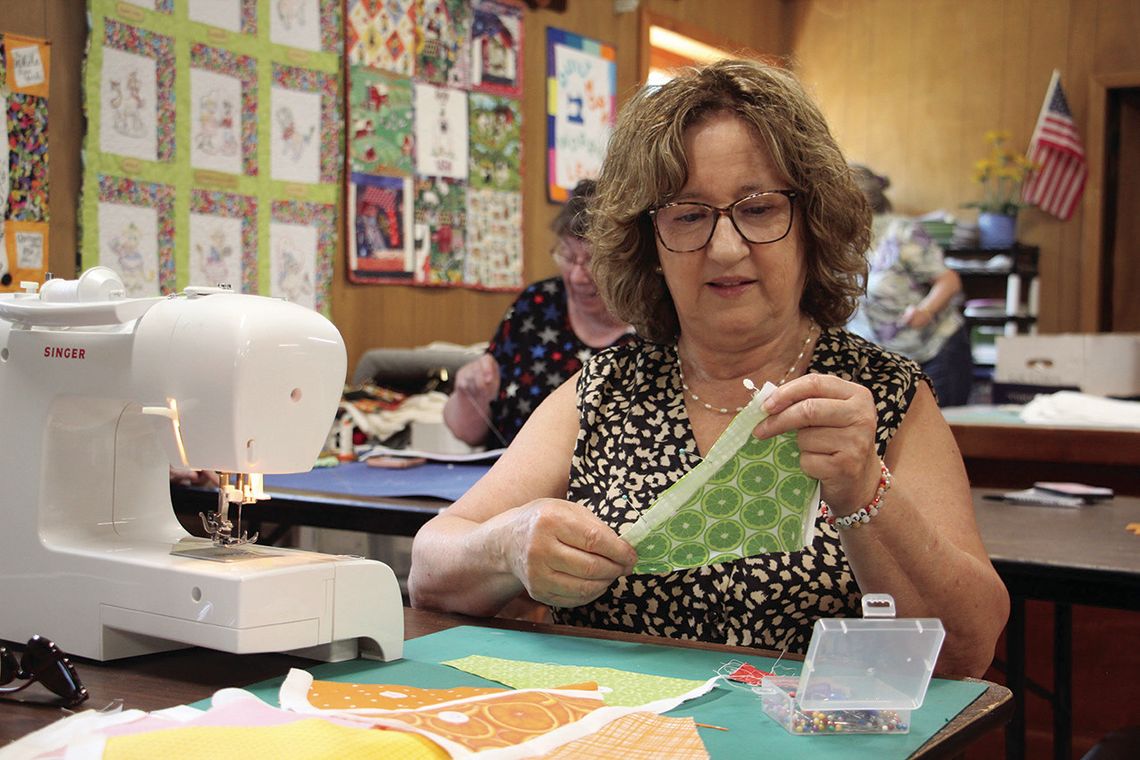County granges operate as memberships fall and costs rise
PRIEST RIVER — Randee Pound grew up in the grange.
Pound has been involved with Edgemere Grange by Priest River since her youth. Both of her parents were members, and long before she joined them in her 20s, Pound participated in 4-H through the Hoodoo Hustlers 4-H Club that meets in and is sponsored by Edgemere.
She was a member for a while before quitting when her own children grew older and busier, Pound said. After another while, she rejoined Edgemere in the ‘90s and stayed for the next 20 to 30 years, eventually becoming Edgemere’s president.
“Your little communities, that’s where they gathered. They did all their social stuff there because they just didn’t go to town,” Pound said.
“You had the grange.”
Pound is one of 668 grangers in all of Idaho.
They make up the memberships of 21 granges, two of which — Edgemere and Blanchard — are in Bonner County.
With more granges than any other state, Washington has about 2,000 grangers in over 200 granges, six of which are in Pend Oreille County: Calispel by Newport, Davis Lake, Diamond Lake, Camden, Fertile Valley and Selkirk Valley by Ione.
Like many others across the country, granges in Idaho and Washington have been losing members statewide since around the 1980s. Though granges in some states, such as Idaho, have gained members in the last five years, Idaho State Grange President Eileen Javaux said constant maintenance, increasing insurance rates and aging memberships are making it a struggle for grange halls everywhere to stay in operation.
“This is not just a concern in Idaho,” Javaux said. “It’s everywhere.”
The National Grange is the country’s oldest agricultural and rural public interest organization, founded in 1867 toward the end of the Civil War to organize farmers as part of the post-war reconstruction effort, part of which involved the rehabilitation of farms and agricultural lands.
The first of the National Grange’s chapters in then-Idaho and Washington Territories were established a few years later in 1873 and 1874, with most of the granges in West Bonner and Pend Oreille counties establishing in the early 20th century.
“Originally, it’s a farm thing. It’s a husbandry,” Calispel President Patti Monk said, referencing the National Grange’s official name: the National Grange of the Order of Patrons of Husbandry. “It was a group of farmers that supported agricultural things that came across the legislature.”
For over 150 years, granges have shared two purposes: community and advocacy.
Grangers at Calispel teach sewing and crafting classes and fundraise for groups such as the Hospitality House, Cusick School District, Youth Emergency Services and Pend Oreille County Library District. Similarly, Edgemere hosts bingo fundraisers and free monthly meals, Camden hosts farmers and artisans markets and fitness and gardening classes and Fertile Valley hosts county grange contests and holiday shoots.
Along with being social, educational and community service organizations, granges have always been advocacy groups. As farmers, grangers advocated for agricultural legislation, the most significant of which was the Sherman Antitrust Act of 1890.
More recently, a 2018 bill suggested by Edgemere reclassified alpacas as livestock, reducing the associated tax.
“It’s much broader than a social thing,” Camden President Mary Lee Rozelle said. “There’s education that goes along with it. There’s camaraderie. There’s meeting the needs of people not just socially, but financially and education-wise wise and stuff too.”
There were about 800,000 grangers in 20,000 granges at their peak in the mid 1870s. Now, there are only about 150,000 in 1,700, which Javaux attributed to a decrease in farms that began in the early 20th century. Membership decreased further between the 1990s and early 2000s after granges no longer required locals to be members to receive insurance from them.
Some granges like Calispel, which has about 16 active members, have around the same members as before 2020, while others like Camden, which has 12 to 15, have more.
But at Edgemere, membership has decreased since 2020 to about 10 active members. Certain grangers moved away from the area just before 2020, more quit during the following COVID-19 pandemic and others have aged out, including Pound’s own mother.
“Agriculture is going away,” Javaux said. “And we don’t have the same needs as they did when [granges were] organized.”
Most granges must also pay to maintain and insure their grange halls.
In Pend Oreille and West Bonner Counties, grange hall maintenance entails anything from adding wheelchair ramps to replacing roofs, siding and electrical.
Edgemere, whose grange hall is the only one in a log building in the west, has to apply a new coat of oil every five years because of its age, Pound said.
And the rates to insure grange halls are increasing. Calispel’s insurance increased by $300 last year and has doubled by $1,500 in the last decade, Monk said. Other granges such as Blanchard, whose liability insurance is over $2,000, have also reported insurance increases.
Grangers at Calispel only earn about $2,000 at the Pend Oreille County Fair, which Monk said used to be one of their only fundraisers — the only way for granges to earn money besides collecting a bare minimum membership fee or renting out their grange hall.
“That’s really hard for a grange to do the fundraising [for],” Javaux said.
Despite this, granges stay in operation because “that’s what neighbors do,” Monk said. Many granges were — and are still — the only centers in their communities; they were dance halls, wedding reception venues, theatres, clubrooms and even churches, Monk said. Grangers themselves have volunteered hundreds of hours and fundraised millions of dollars for their communities on behalf of their granges.
One grange in Pend Oreille County has not only managed to stay in operation, but also started operating as recently as November 2024. Selkirk Valley Grange was established by members of a 4-H club to expand memberships to the children’s families. They do not have a grange hall, but about 50 grangers — aged 5 to over 60 — are active regardless.
“It’s a really good outlet for youth and family, both,” Selkirk Valley secretary Alicia Haney said. “There’s not a lot of things to do in our area up north, … It’s just a neat thing to be a part of.”
.png)






